Genoa CFC are looking to retain their Serie A status following a swift promotion back to the top division after relegation two years ago.
Whilst they have been one of the best sides defensively based on the expected goals conceded in the opening 12 games of the season, this has come at a cost on the other side of the pitch.
Averaging the lowest amount of possession in the league, the fewest shots attempted, and the fewest corner kicks won, opportunities to score are limited.
While the chances are limited, Alberto Gilardino’s side are doing their best to make the most of the chances they do get, especially from set plays.
This side
, which has won fewer set plays than any other, leads the set play statistics, with only Inter Milan and Juventus having created more chances.Juventus are the only team to have scored more set play goals than them.
In recent weeks, Genoa haven’t received much attention for their set play success.
While they have been slightly stubborn concerning their hesitance in varying corner routines, their routine under Alberto Gilardino’s tactics has been effective.
This set piece setup, which we are about to dissect, incorporates elements from Gianni Vio’s time at Spurs as set-piece coach and some tricks Nicolas Jover uses with Arsenal to develop a reliable and consistent chance-creation method from corner kicks.
In this tactical analysis, we will
examine the tactics behind Genoa’s offensive corners and analyze why their corner routine has been so efficient.This set-piece analysis will examine why this routine has helped them score goals and take points from the top sides and the areas where this routine could fall short.
Manipulating Zonal Defenders
A concept used by Gianni Vio’s coaching style is the use of multiple attackers, all targeting different areas between zonal defenders located in the six-yard box.
Attacking multiple pockets in the zonal spaces is an effective way of dragging defenders out of position through overloads in those areas.
When a player attacks the space in front of the nearest zonal defender, that defender has to make a movement forward to stop a player from attacking the empty space in front and making the first contact, from where they could possibly header the ball towards goal, or across the six-yard box for a teammate at the back post.
Once the front zonal defender makes the move forward, it leaves a space between the first and second zonal defenders, which the next attacker will target, as shown in the example below.
This creates a chain reaction, where the zonal defender always has to shuffle forwards to cover the space, whilst another attacker attacks the space the defender leaves behind.
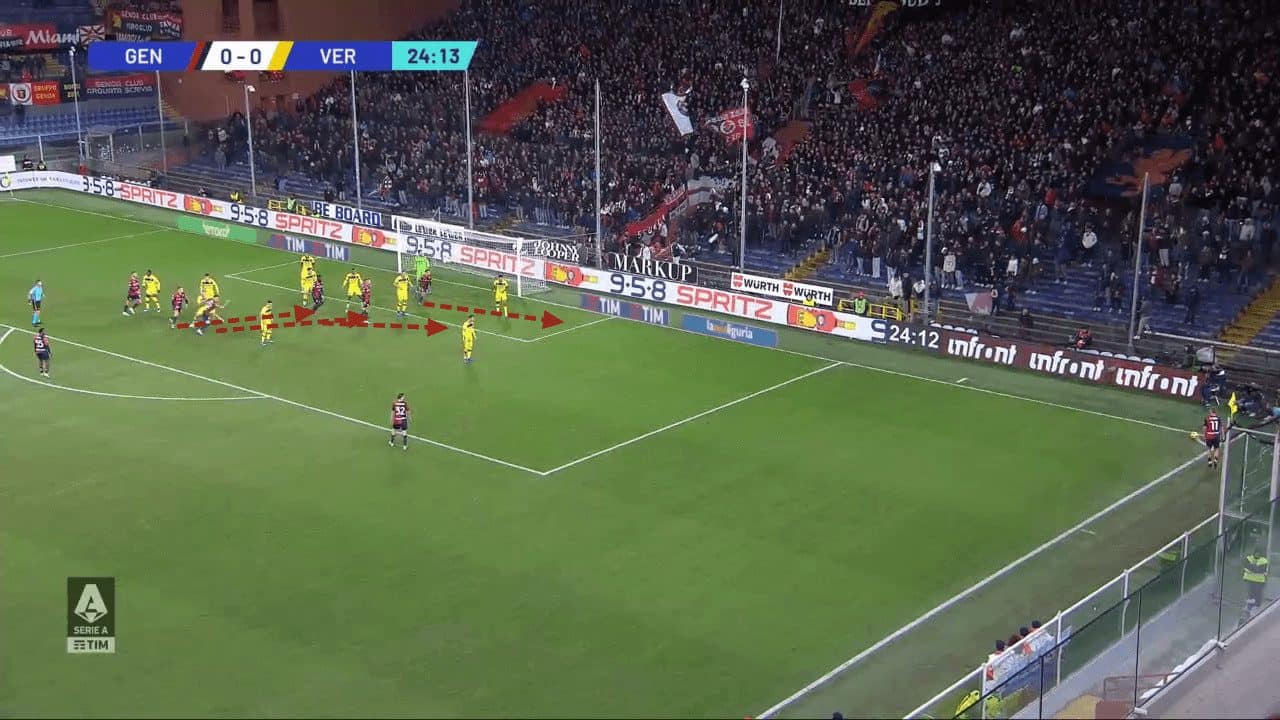
With runs to deal with both in front and behind them, zonal defenders have minimal time to decide whether to hold their position or track the run in front of them.
This also depends on the flight of the cross and the timing of the run, giving defenders either more or less time to make a decision.
In the example below, the defender can see the attacker in front of him but decides to stick, considering he also has a zonal defender in front.
Still, with the large spacing, the attacker is able to attack the ball without much opposition in the pocket.
The defender is in a troubled position, as his potential movement towards the ball could then leave a space closer to goal open, where another attacker is ready to occupy the space should it be left open.
So it’s hard for the zonal defenders to have much success either way, with so many attackers crashing into the box.
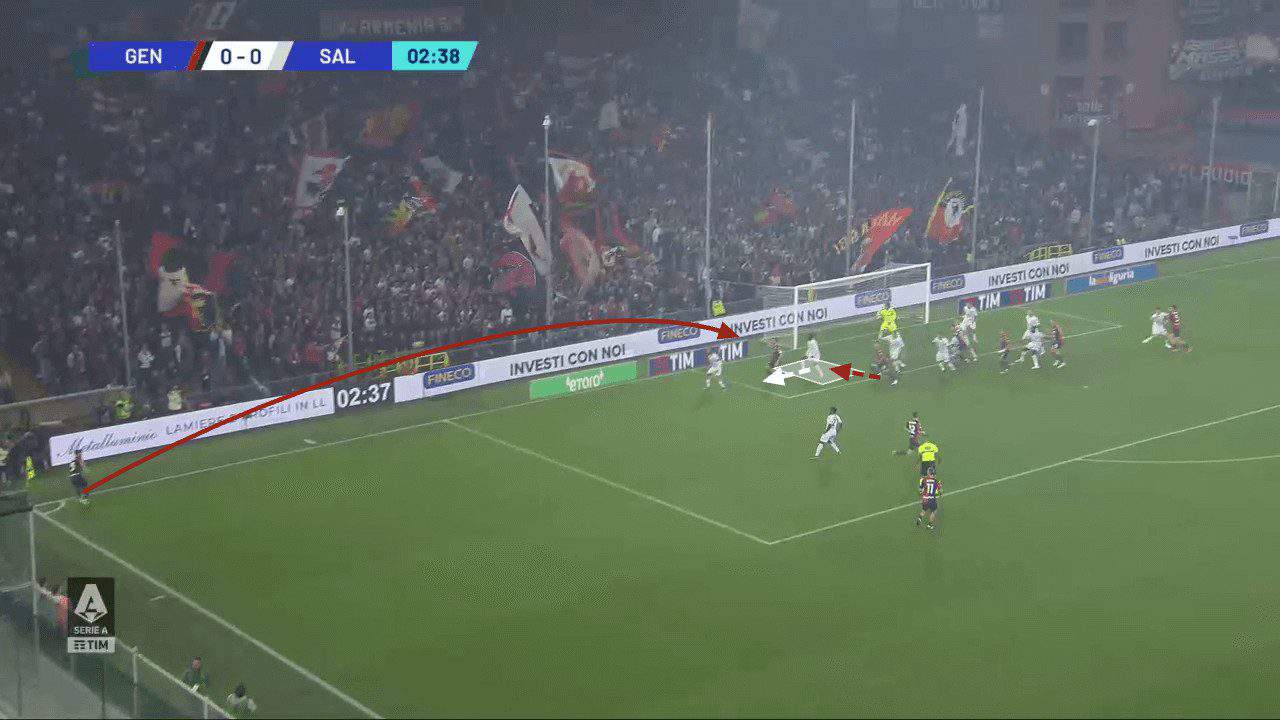
However, a problem with this system is that you often encounter strong defenders who are excellent at reading situations.
If a cross is whipped in, certain defenders won’t be troubled by a run across them as they read the situation instantly and realise that the ball isn’t going to land in that area.
One player holding their position has the potential to break the whole domino effect and prevent the routine from being successful.
Overloading the Six-Yard Box
The key to this setup’s effectiveness is that the attacking side has to be brave and attack with numbers every time to cause problems for every zonal defender from both the front and back.
If each zonal defender only had one side to worry about, defenders would be much more consistent in attacking the ball early without the worry about leaving the original space behind.
However, with the vast number of attackers lining up for the crosses, there is always a spare attacker lurking over the shoulder, so if defenders step up too early, they will be leaving an attacker free behind them.
The example below makes this evident: Genoa had already won against Roma in the last quarter of the game but still sent seven attackers into the penalty area.
Attackers know the ball will go through the path shown in the image and can attack different parts of the path to cover for the attackers ahead of them in the line.
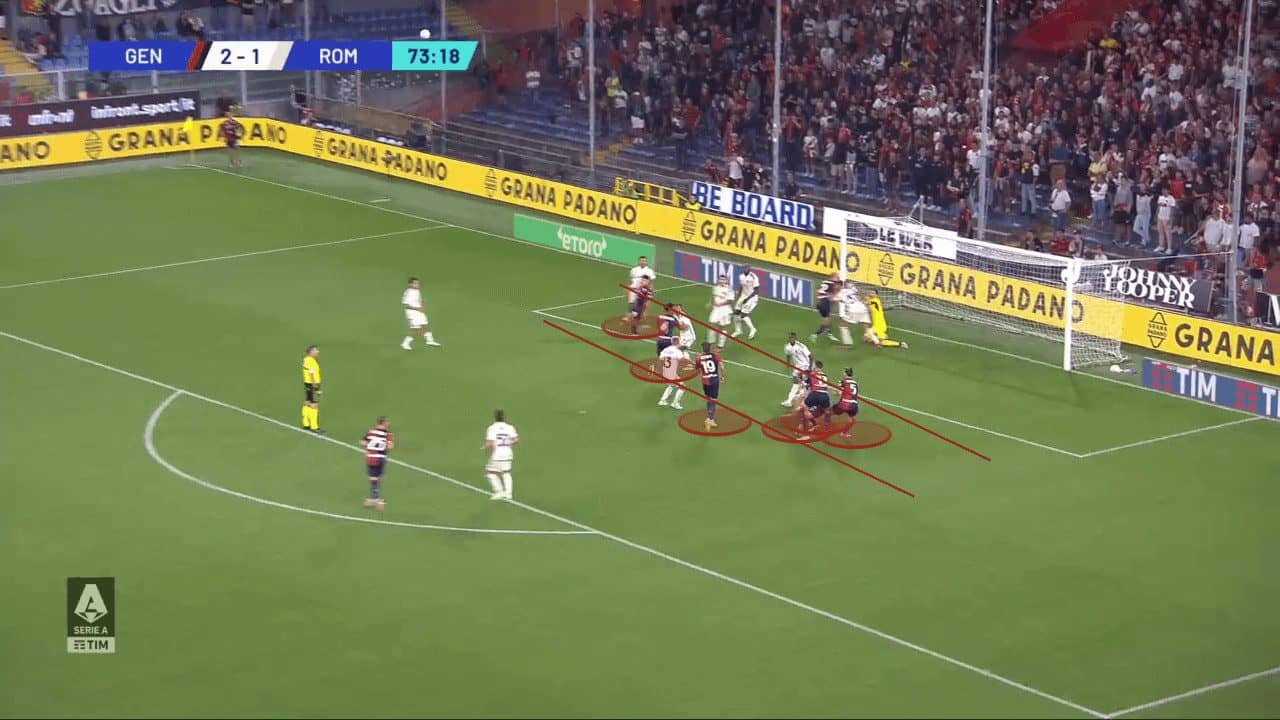
This method also helps ease the pressure on the corner takers, as they have only to ensure they get the direction of the cross right whilst not overly worried about the power.
The attackers all attack one path across different points, so if the ball is overhit or under-hit, there should be an attacker on the end of the cross every time.
As with many successful teams, arriving in the space is essential for most successful corner kicks.
Genoa achieves this mainly by having two groups of three attackers start on either side of the path they aim to arrive on.
When the corner is taken, they all know their roles and move into the target path at different moments to ensure that they arrive there as the ball will.
This means that the player at the near side has to arrive first, whilst the player nearest the back post arrives last, making sure they do not attract their markers to the target area too early.
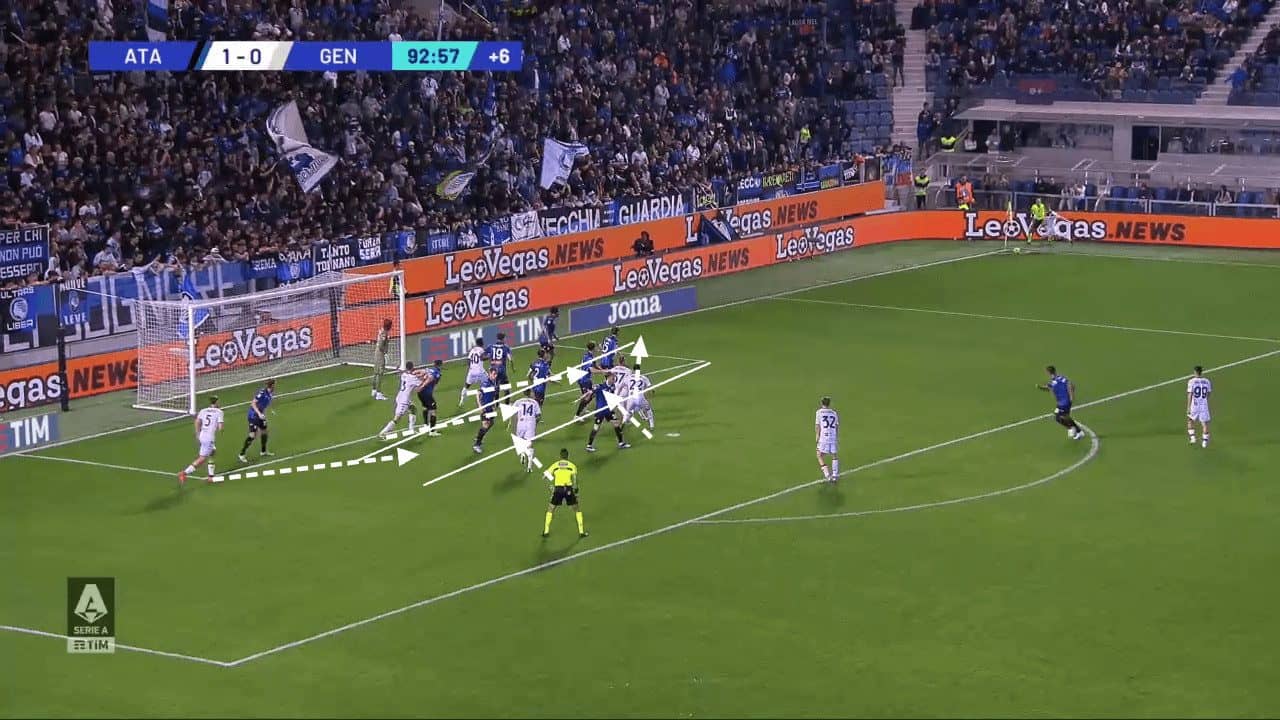
Genoa have also attempted to include screens in their recent corner routines as another means of accessing the six-yard box, which provides more space for attackers to arrive.
As shown in the example, one attacker can sacrifice himself by setting a screen on the zonal defender, perhaps the strongest aerial defender, in an effort to avoid the chain reaction being broken by the most likely disruptor.
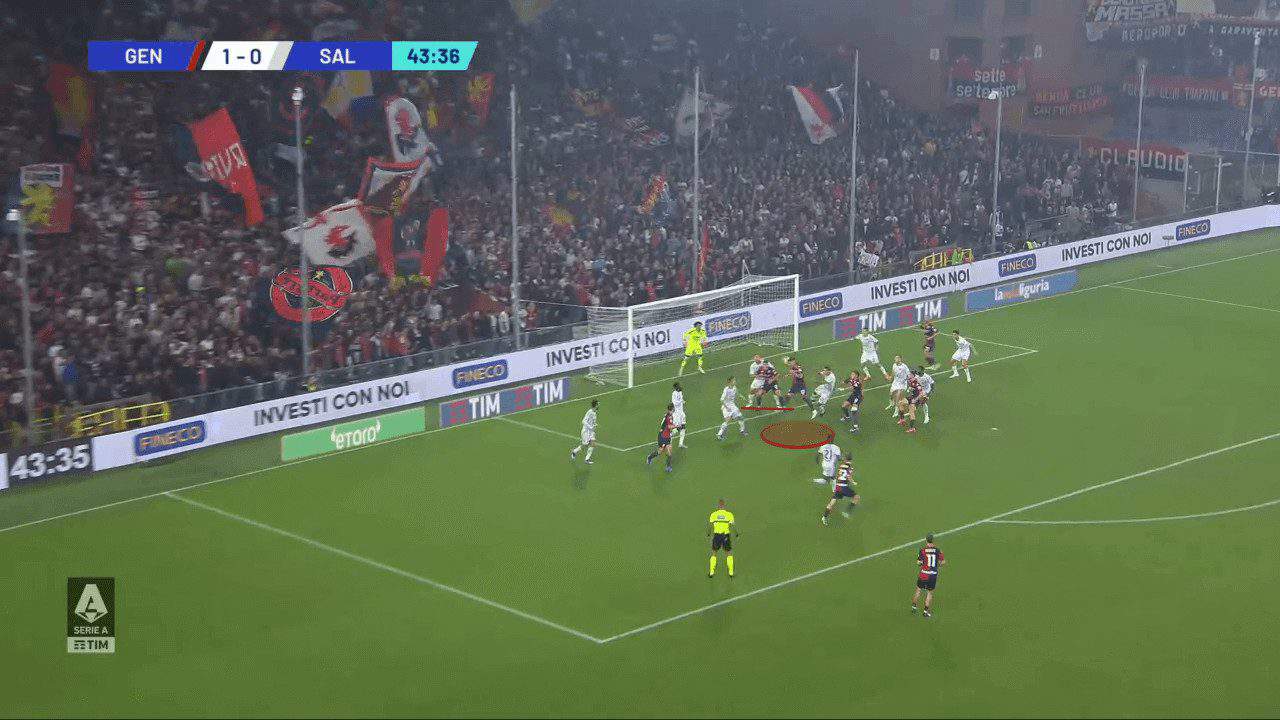
Blindside Starting Positions
With all the focus on arriving in the pockets of space, it is also imperative for attackers to be able to arrive in those areas with separation from their markers.
Positioning behind the defender’s shoulder is the most effective way for attackers to create separation in 1v1 situations.
In a move demonstrated in recent weeks by Arsenal and Man City, attackers can get away from their markers by standing behind the defender’s shoulder before darting towards the corner taker to get the separation in front of them.
Timing is critical to this, and while this doesn’t ensure an attacker gets the goal side of their marker, the opportunity of making the first contact inside the six-yard box outweighs the way the contact is made.
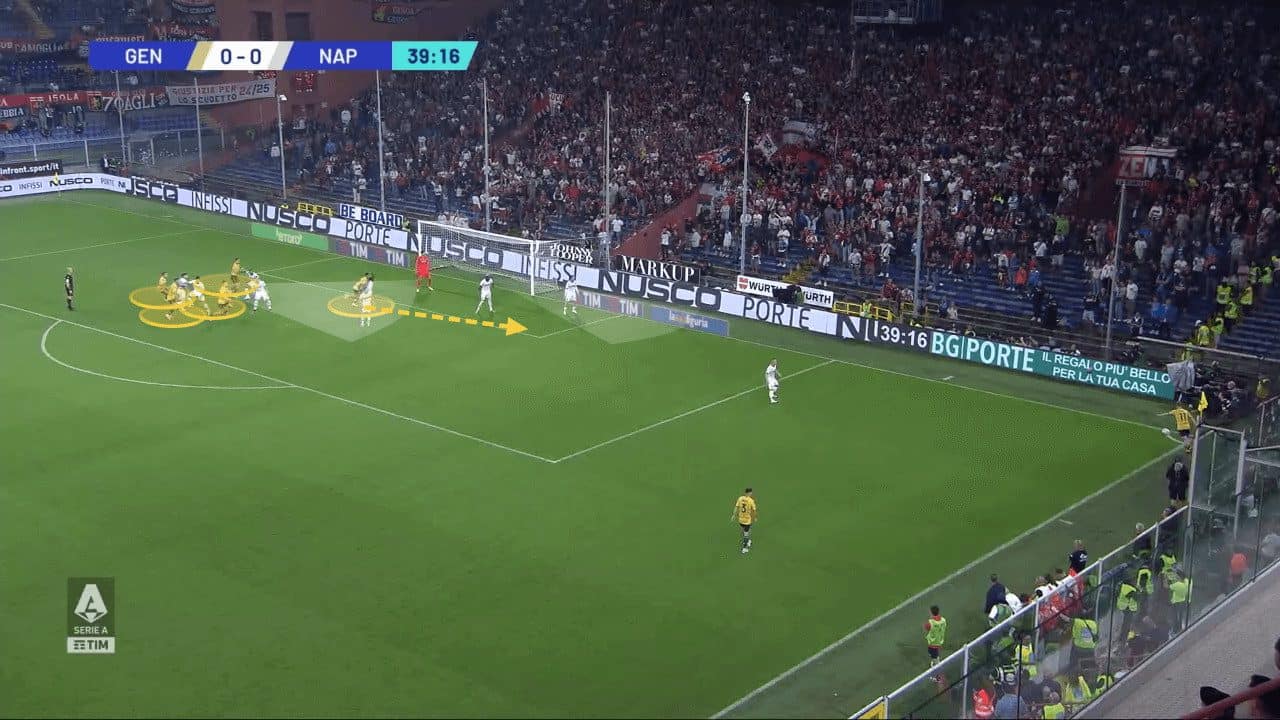
Once Genoa has done all it can to ensure it can make the first contact from a cross, an attacker will usually target the far post.
There, he can ghost into the six-yard box unmarked and attack the ball should it be flicked across the goal or if a goalkeeper makes the save from the original effort.
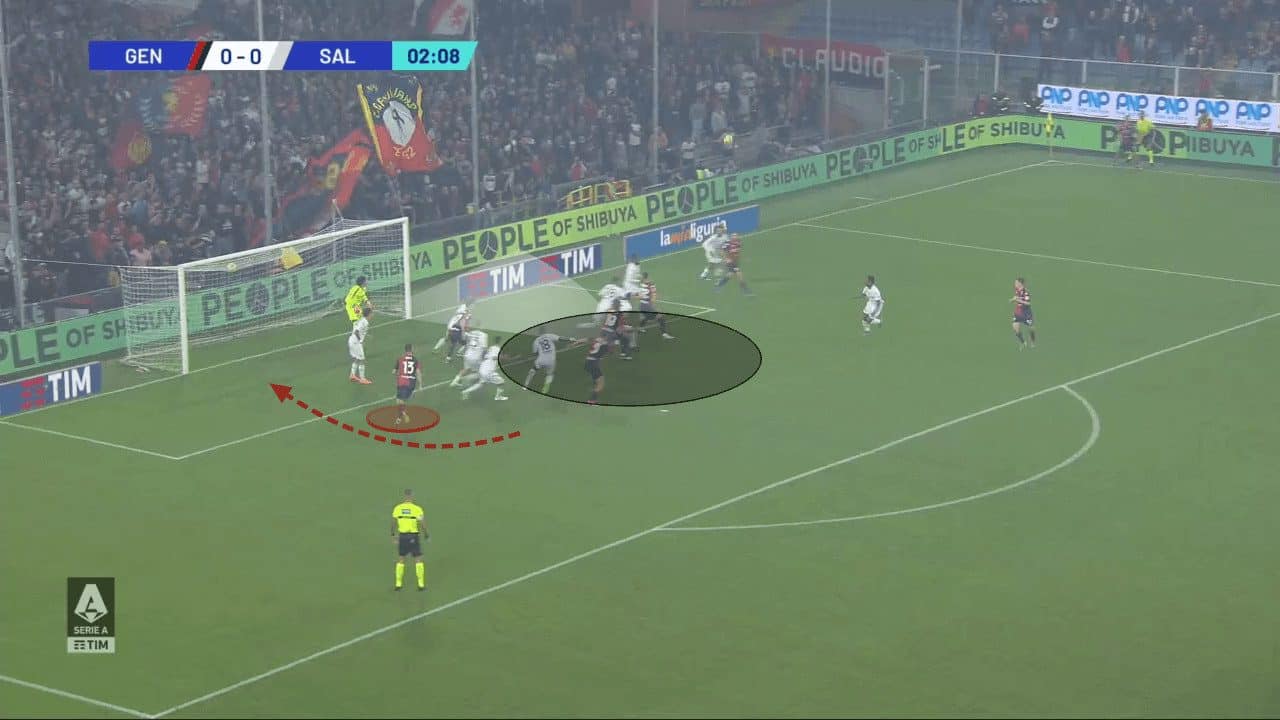
Summary
This tactical analysis has detailed how and why Genoa, under Alberto Gilardino’s coaching style, have become one of the most dangerous set-piece sides in the league despite them averaging under three corners per game.
Based on the performance of some top set-piece sides over recent seasons, their take on corners has earned them crucial points in the fight to remain in the league.
However, they have to consider alternative routines to avoid becoming predictable.
In the games where Genoa had more than their average of three corners, the corners became more accessible to defend as the game went on, with opponents being able to anticipate moves earlier and increasing the amount of protection in critical areas.
Genoa’s routine is most effective when there are fewer zonal defenders, where each defender is responsible for larger areas of space and, therefore, more likely to be pulled out of their position.
Man-marking hasn’t been a big issue due to the attacking players’ deep positions behind the opponent’s shoulder.
Still, teams with many zonal defenders protecting the target area have been better at dealing with the pockets of space between each player.






Comments